For automobile lithium batteries with over 7000 cycles, the favorable impact of external pressures by bracing the cells on aging has been explored in the latest research in Advanced Energy Materials. Following the cycling process, the aged cells were examined utilizing post-mortem analysis.
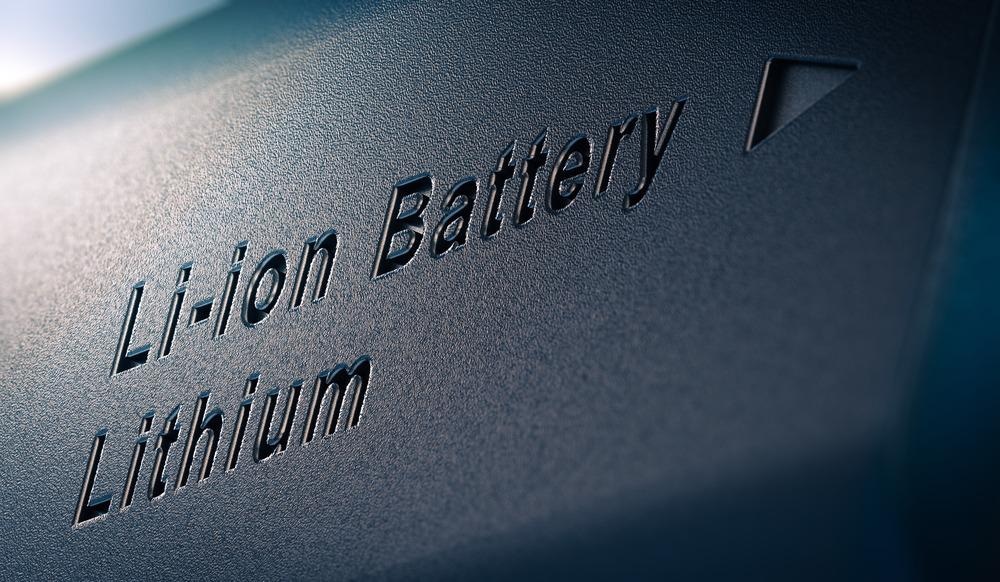
Study: Impact of Bracing on Large Format Prismatic Lithium-Ion Battery Cells during Aging. Image Credit: Olivier Le Moal/Shutterstock.com
Importance of Lithium-Ion Batteries
Lithium-ion batteries (LIBs) are extensively used in portable devices, electrical automobiles, and long-term power storage superior power concentration, and prolonged cyclic stability. Li-ion batteries are also used to power large maritime apparatus and vessels.
Aside from that, renewable radiation conveniently employs Li-ion cells for photovoltaic arrays due to their quick and effective recharging and storing. Reusable lithium batteries are ideal for remote monitoring systems due to their extended duration, compactness, and absence of power outage due to self-discharge when the device is inactive. As a result, lithium-ion batteries have found use in practically every aspect of life.
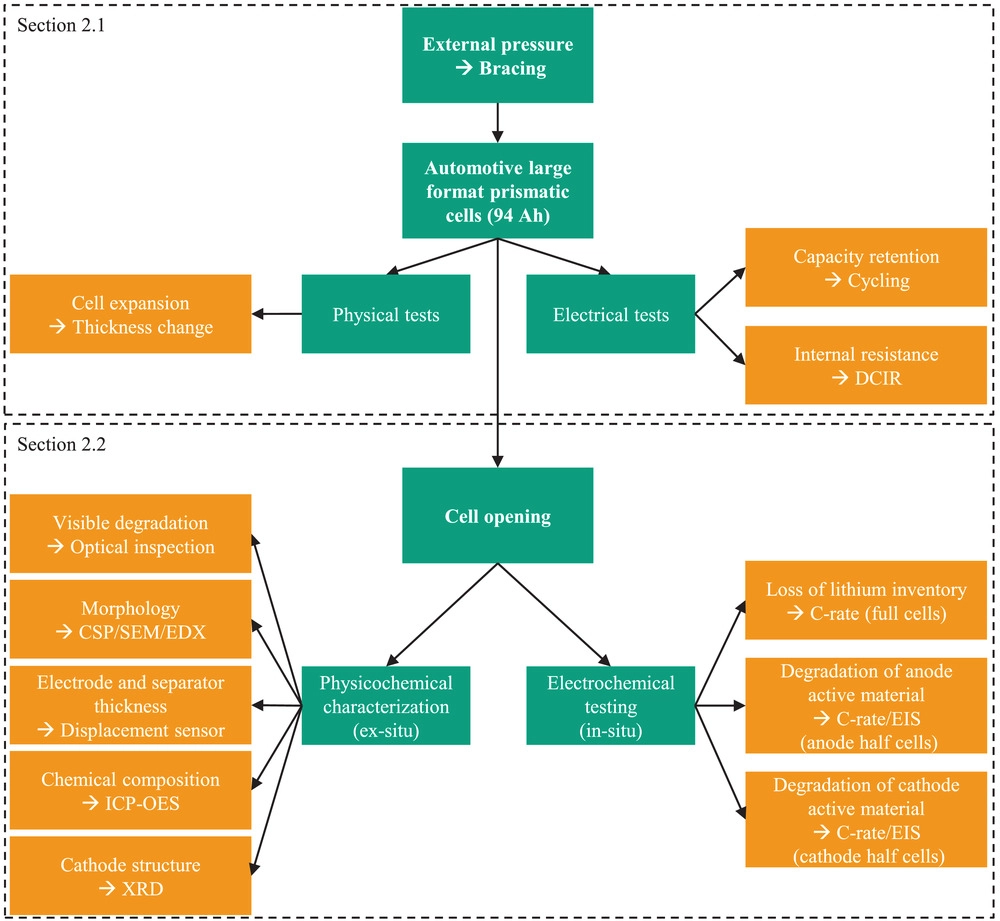
Master chart of the experiments conducted in this work. Section 2.1 deals with the aging of the prismatic lithium-ion cells and Section 2.2 with the subsequent post-mortem study. Image Credit: Daubinger, P. et al., Advanced Energy Materials
Limitations and Need of Superior Lifetime
However, significant constraints persist, including relatively high prices, a restricted regeneration plan, material shortages, notably for cobalt and lithium, and safety issues. Because of these economic and environmental considerations, a long battery cell lifetime is critical for societal acceptability as well as reducing the ecological imprint and expenses.
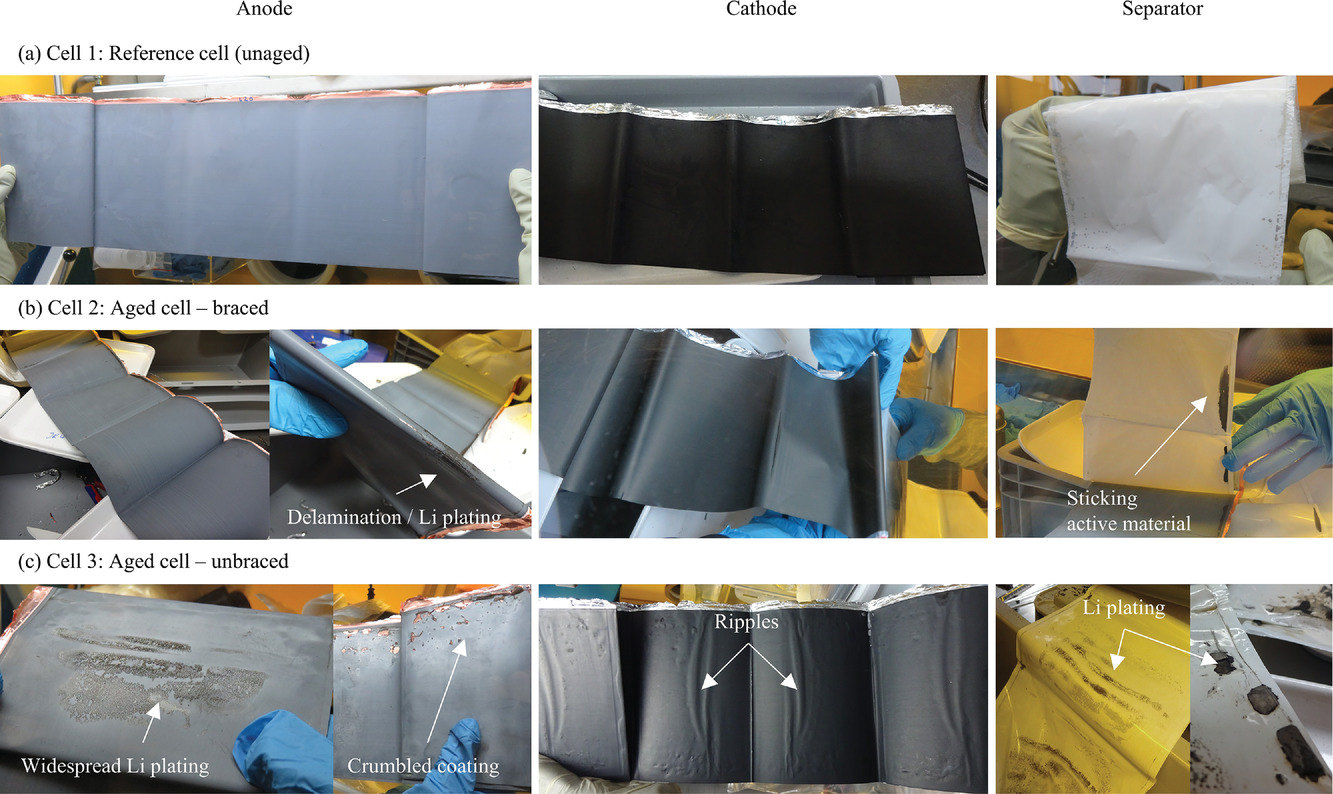
Photographs of electrodes and separators after cell opening. a) Cell 1: unaged reference cell, b) Cell 2: aged braced cell, and c) Cell 3: aged unbraced cell. Image Credit: Daubinger, P. et al., Advanced Energy Materials
Advantages and Limitations of the Prismatic Cell Type
The pouch cell, round or cylindrical cell, and prismatic cell are the three most frequent cell types. The tight packing, easy module design, and high-power density in modules are all benefits of prismatic cells. They do, however, age quicker than circular tubes due to a variety of factors such as decreased pressure or mechanical stability within the cell.
Low decompression might result in inadequate engagement between the elements inside an electrochemical stack due to temporary and permanent expansion and contraction of the anode and cathode during cycling.
The current research was performed in two steps. The electrophysiological findings of the aging experiments, in which the batteries were operated for over 7000 cycles under various bracing circumstances, are provided in the first portion. The deterioration of the cells is investigated in the second portion utilizing various post-mortem analytical techniques.
Latest Research Findings
All of the cells in the research exhibited comparable aging at first, with a considerable capacity loss in the first 700 cycles. Beginning around 3000 cycles, unbraced cells exhibit a greater decline in capacity than braced cells. The crucial threshold of 80 percent SOH was attained for unbraced cells at 3800 cycles and for braced cells at 4700 cycles.
The cycling of the cells was interrupted for five weeks after 7420 cycles for the unbraced cells and 7170 cycles for the braced cells to observe the relaxation behavior of the cells. After the pause, the unbraced cells exhibited no potential restoration. When contrasting the last five cycles before with the initial five cycles after the interval, the braced cells recovered 12% of their discharge rate.
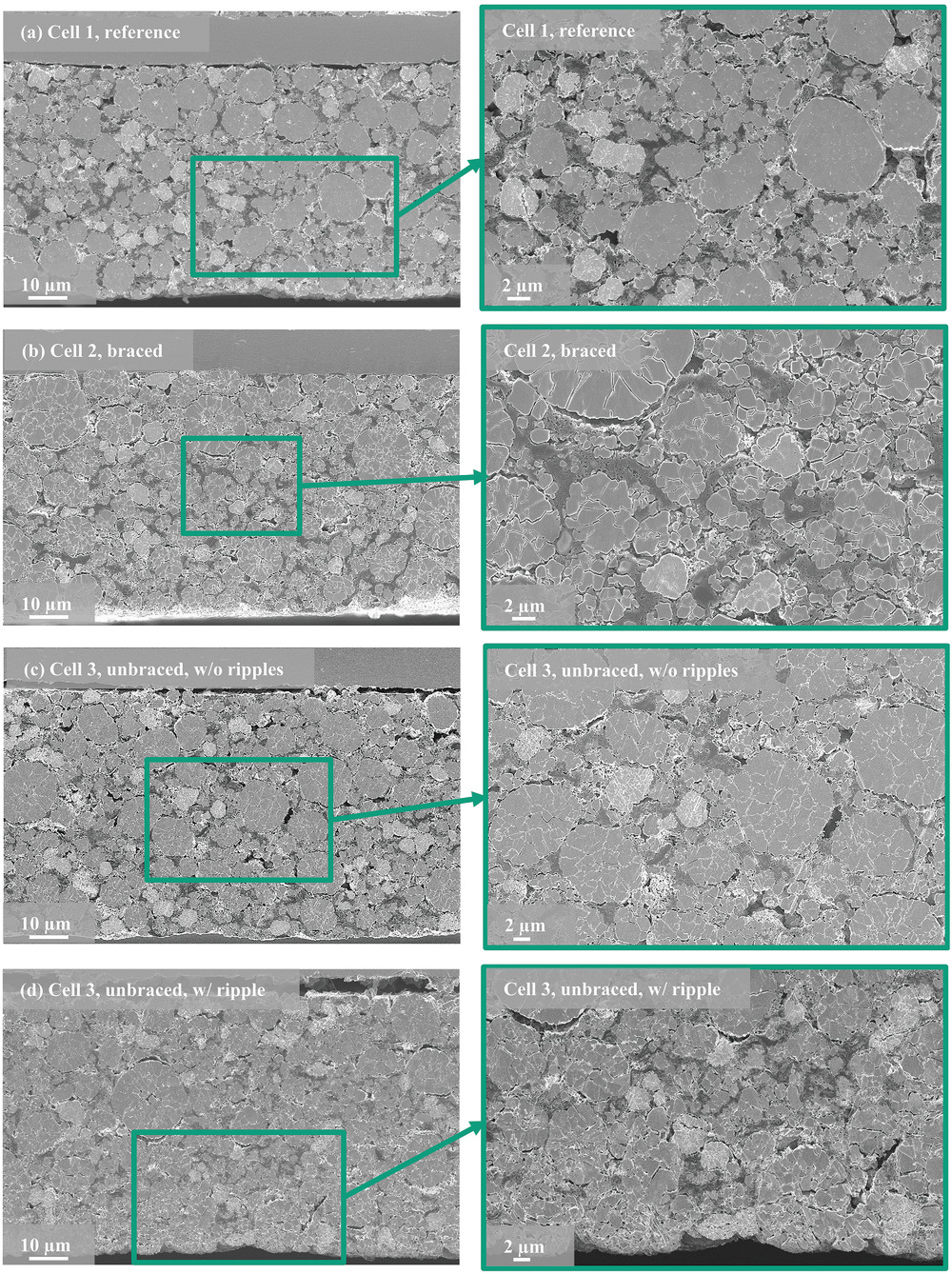
SEM cross-sections of the differently aged cathodes. a) Cell 1, reference, b) Cell 2, braced, c) Cell 3, unbraced, w/o ripples, d) Cell 3, unbraced, w/ ripple. On the pictures on the left side the current collector can be seen at the top, and the electrode area near the surface at the bottom. Image Credit: Daubinger, P. et al., Advanced Energy Materials
Post Mortem Investigations
Three of the cells were subjected to post-mortem examinations. The first cell (Cell 1) is the uncycled benchmark cell (just formation cycles), the second cell is the braced cell (Cell 2), and the third cell is the unbraced cell (Cell 3).
Cell 1 (The reference cell) shows no obvious deterioration (e.g., depositions, debonding, or fissures), and the surfaces of the electrode look uniform. Cell 2 (aged cell braced) has just minor apparent deterioration. Except for a few locations near the actual collection, the electrode appears to be homogenous. Cell 3's electrodes and separator (old cell, unbraced) indicate substantial deterioration. The morphology of the anode surface of Cell 1 (reference cell) shows a uniform Al2O3 particle coating on the graphite.
Cell 2 (braced), however, reveals additional depositing spots that might represent electrolyte breakdown products. The anode surface of Cell 3 (unbraced) has many coatings that can be attributable to coated lithium. Degradation in the covering can only be observed in Cell 3, the unbraced old cell. Immediate interaction with the graphite particles occurs at these places, resulting in lithium plating.
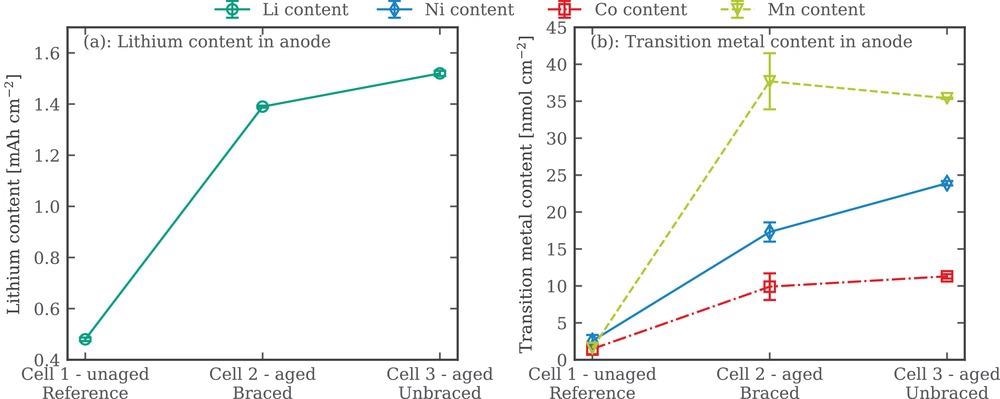
Lithium (a) and transition metal content (b) in anode for reference and aged cells. The lines are a guide for the eye only. Image Credit: Daubinger, P. et al., Advanced Energy Materials
Mechanical SOH is designed to focus more on the mechanical properties of materials and cell components and their impact on capacity loss. The mechanical SOH of the aged cells' anodes is just somewhat lower than that of the reference cell. There has been a minimal rise in cracking. Overall, mechanical SOH may be utilized to detect the deterioration of electrode material.
To summarize, the aging phenomena of prismatic Lithium-ion batteries affected by bracing have been assessed. Externally braced prismatic cells demonstrate improved cycling performance throughout the aging test, hitting the 80 percent SOH threshold 900 cycles later than unbraced cells. This finding emphasizes the necessity of external bracing, especially a homogenous pressure distribution, in lithium-ion batteries.
References
Daubinger, P. et al., 2021. Impact of Bracing on Large Format Prismatic Lithium-Ion Battery Cells during Aging. Advanced Energy Materials. Available at: https://onlinelibrary.wiley.com/doi/10.1002/aenm.202102448
Disclaimer: The views expressed here are those of the author expressed in their private capacity and do not necessarily represent the views of AZoM.com Limited T/A AZoNetwork the owner and operator of this website. This disclaimer forms part of the Terms and conditions of use of this website.